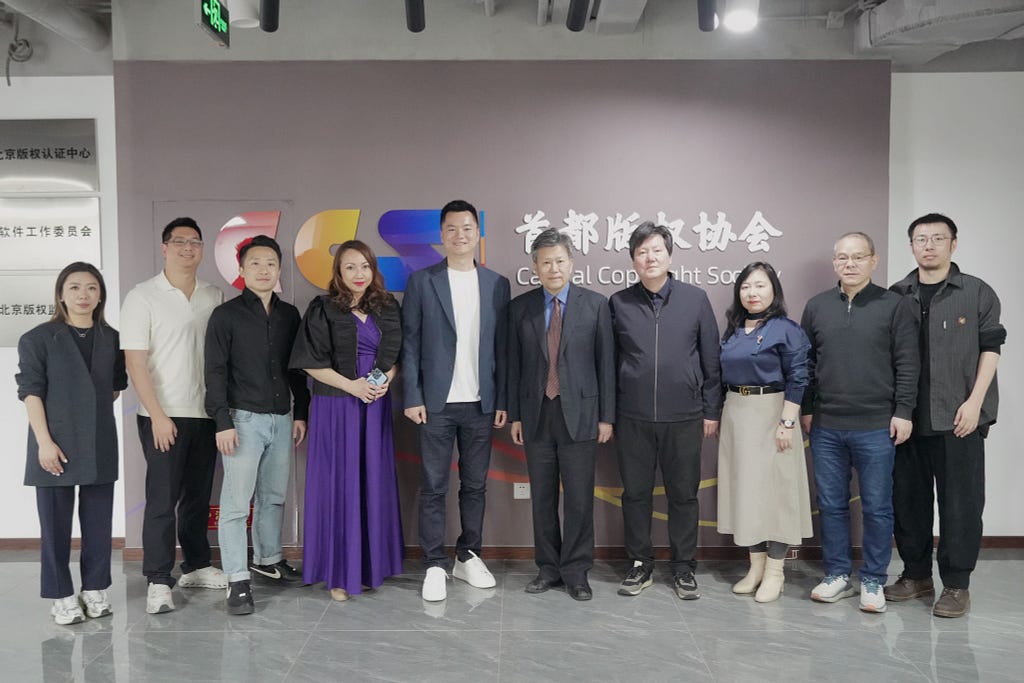Transforming Digital Asset Management: The Move Revolution
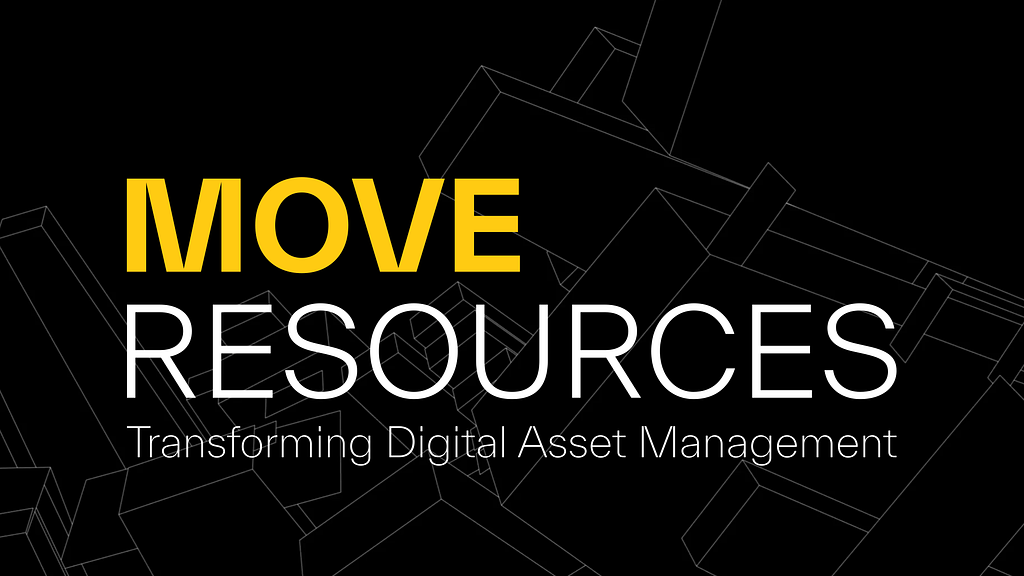
The digital landscape is continuously evolving, with digital assets becoming increasingly central to the fabric of technology and finance. Amidst this transformation, the management and security of digital assets have emerged as critical challenges. Traditional systems often need to catch up, plagued by duplication, unauthorized access, and tampering issues. The Move programming language represents a beacon of innovation in this context, offering a novel resource model that promises to redefine digital asset management.
EVM’s Asset Management Approach: Setting the Blockchain Standard
The EVM’s methodology for managing digital assets has indeed set a standard in the blockchain industry, with its approach centered around three pivotal components: centralized asset logic, mutable states, and dynamic asset control. This framework has become synonymous with the development of a vast and diverse range of DApps, each leveraging the unique capabilities offered by Ethereum’s smart contract platform.
Centralized Asset Logic
At the heart of the EVM’s asset management lies the concept of centralized asset logic through smart contracts. This design choice streamlines operations by consolidating the rules and behaviors of digital assets into single points of reference, which are the smart contracts themselves. While this centralization enhances efficiency and simplifies the deployment and management of assets, it introduces the need for robust security measures. The centralization of logic and control within smart contracts makes them prime targets for attacks, necessitating advanced security practices to safeguard against vulnerabilities. The reliance on smart contracts to dictate asset behavior underscores the balance between operational efficiency and the critical importance of securing these centralized points of logic against potential exploits.
Mutable States
The EVM allows for mutable states within its smart contracts, providing developers with the ability to define and alter the state of digital assets dynamically. This flexibility is a double-edged sword; on the one hand, it permits the adaptation and evolution of digital assets in response to changing conditions or requirements, thereby enhancing the utility and responsiveness of DApps. On the other hand, it requires a heightened level of security to prevent unauthorized changes that could compromise asset integrity. The mutable nature of assets within the EVM framework demands continuous vigilance and advanced security protocols to ensure that only authorized modifications are made, maintaining the trust and reliability of the blockchain environment.
Dynamic Asset Control
Dynamic asset control is another hallmark of the EVM’s approach, enabled through the use of state variables in smart contracts. Despite the immutable nature of the contract code itself, state variables can be updated, allowing for flexible and adaptive asset management. This capability ensures that developers can craft solutions that are not only secure but also capable of evolving with the ecosystem’s demands. However, this dynamic control mechanism also emphasizes the need for a careful balance between security and adaptability, as the ability to alter asset states dynamically must be safeguarded against unauthorized access or manipulation.
EVM Challenges Explored
The EVM’s groundbreaking approach to enabling smart contracts and decentralized applications also introduces unique challenges in managing digital assets. These challenges stem primarily from the architecture and operational mechanics of the EVM, impacting the security, integrity, and trustworthiness of assets managed within its ecosystem.
Lack of Ownership Enforcement
A critical challenge within the EVM framework is the absence of intrinsic mechanisms to enforce asset ownership and establish a unique identity for assets. This gap can lead to significant security concerns, including disputes over asset ownership and unauthorized use of digital assets. Without a built-in validation of ownership at the blockchain level, assets become vulnerable to exploitation. Malicious actors might manipulate vulnerabilities within smart contracts or the broader network to claim ownership or access assets without legitimate authority, undermining the integrity of blockchain transactions and the trust in the digital assets ecosystem.
Copy and Drop Risks
The flexibility afforded by the EVM in managing digital assets is accompanied by the risk that assets might be copied, dropped, or discarded without sufficient safety measures. This poses a particular threat to the blockchain’s reliability and the trust users place in digital assets, especially non-fungible tokens (NFTs), where uniqueness is a core value. The potential for assets to be inadvertently duplicated or lost not only compromises the value of individual assets but also challenges the overall security and reliability of the blockchain. Such risks highlight the need for rigorous control mechanisms within the asset management process to prevent unauthorized replication and ensure the integrity of assets on the blockchain.
Mutable Resources Unauthorizedly Altered
The mutability of resources controlled by smart contracts on the EVM introduces another layer of complexity and risk. Resources or assets that can be altered without proper authorization present a substantial security vulnerability. Unauthorized changes to mutable resources can lead to the manipulation of asset attributes or balances, directly affecting their value and the security of the blockchain platform. This vulnerability is particularly concerning in the context of decentralized finance (DeFi) applications, where the unauthorized alteration of asset attributes could have wide-ranging financial implications. The challenge lies in securing these mutable resources against unauthorized modifications, ensuring that the integrity and trust in the digital assets managed on the EVM are maintained.
Contrast with Move’s Resource Model
In contrast to the EVM’s model, Move introduces a resource-centric approach to digital asset management. Unlike the EVM’s reliance on centralized asset logic and mutable states, Move’s design is predicated on the principles of safety, security, and explicit resource ownership. Resources in Move are treated as first-class citizens with built-in protections against duplication and unauthorized access, ensuring that each asset has a single, unambiguous owner at any time. This approach inherently mitigates many of the security concerns associated with the EVM’s centralized logic and mutable states by embedding strict ownership and immutability rules directly into the language’s type system. This model is built on two foundational pillars: linear ownership and immutable resources, which collectively aim to enhance the security and efficiency of blockchain technology.
Reinforcing Security Through Linear Ownership
Linear ownership stands as a critical innovation in Move’s design, ensuring that each digital asset is attributed to a single, definitive owner at any given time. This mechanism directly addresses and mitigates risks associated with asset duplication and unauthorized copying, which are prevalent in systems where asset management is less rigorously defined. Unlike the mutable and dynamically controlled asset states in systems like the EVM, Move’s linear ownership model establishes a clear, unambiguous ownership trail. This clarity is instrumental in enhancing the integrity of transactions and bolstering the overall security of the blockchain ecosystem. By delving into the security implications of linear ownership, we can appreciate how Move not only simplifies asset management but also fundamentally strengthens the trustworthiness and reliability of blockchain transactions.
The Critical Role of Immutability in Move
Immutability in Move’s resource model is another cornerstone that significantly enhances the platform’s security. Once an asset is deployed, its state is immutable, meaning it cannot be altered, which starkly contrasts with the mutable nature of assets managed through smart contracts on platforms like the EVM. This immutable characteristic of Move’s resources ensures that once a transaction is executed or an asset is created, its state remains consistent unless a predefined, secure procedure is followed for transfer or modification. The immutability of resources within Move is not just a technical feature; it’s a foundational security measure that guarantees the integrity of every asset and transaction within the ecosystem. By exploring the nuanced security benefits of resource immutability, we can better understand its pivotal role in maintaining data integrity and preventing unauthorized asset modifications, thereby upholding the trust and security of the blockchain.
Unified Security Framework in Move
By integrating the concepts of linear ownership and immutability, Move’s resource model creates a unified security framework that addresses several critical vulnerabilities inherent in traditional blockchain systems. This framework ensures that every asset within Move’s ecosystem is uniquely owned, traceable, and protected against unauthorized changes, setting a new standard for digital asset management.
Through this cohesive examination of Move’s principles, we avoid redundant descriptions while highlighting the interconnected security benefits of linear ownership and immutability. This approach provides a clearer, more focused narrative on how Move’s resource model enhances the security, efficiency, and integrity of blockchain technology, offering a compelling alternative to traditional smart contract platforms.
Understanding Move’s Resources
In Move, resources are special types of structs that are defined to be non-copyable and must be explicitly transferred between accounts. This design decision is critical for preserving the uniqueness of each asset and preventing common vulnerabilities such as unauthorized duplication or loss. These resources are governed by strict type safety and access control mechanisms, which are enforced by Move’s virtual machine. Such an architecture ensures that every manipulation of resources adheres to secure, predefined protocols. Let’s consider a simple Move code example that demonstrates how resources are defined and managed within the language.
Move Resources Example
In Move, resources are implemented as `structs` with unique abilities like `key` and `store`, enhancing asset security and control. Example:
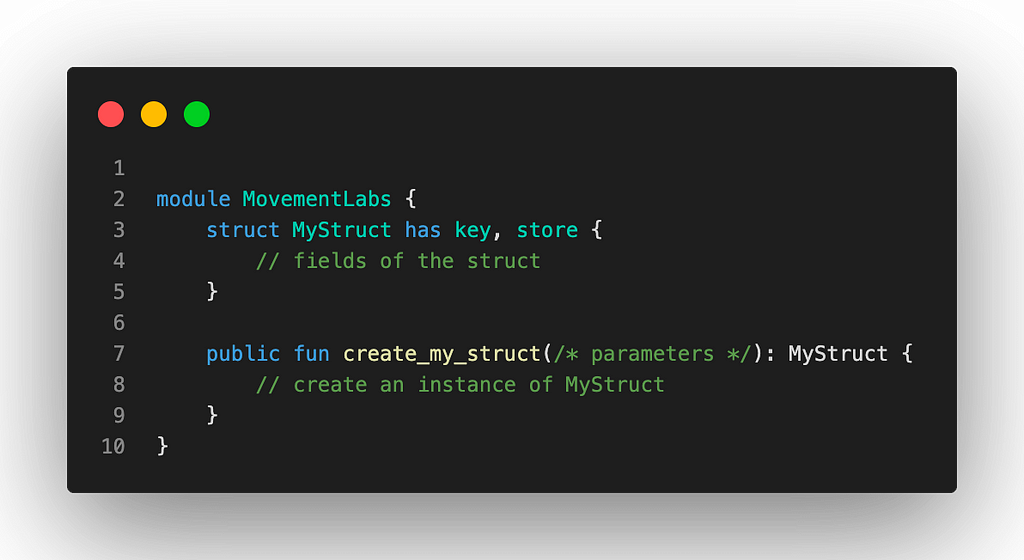
In the world of Move, the fundamental building block for digital assets is the resource, conceptualized as a struct with specialized abilities that dictate how it can interact within the system. These abilities, notably key and store, are not mere annotations but powerful tools that enhance the security and governance of the assets they are attached to.
Take MyStruct as an example — a structured entity within the Move module that is declared with both key and store abilities. This designation is critical, as it not only dictates that MyStruct is unique and has an inherent value that can be associated with a particular account but also ensures that it can be securely stored within the global state of the blockchain. This two-fold ability system serves a dual purpose: ‘key’ underlines the importance of unique identification and ownership, while ‘store’ emphasizes the struct’s eligibility to be preserved in global storage, akin to an asset in a vault.
Such resources are protected by the Move type system and virtual machine verification, which perform static checks to ensure these resources are not misused or mishandled. For instance, a struct with the key ability cannot be arbitrarily copied or discarded, thereby preventing common bugs related to asset duplication or loss. This proactive approach to resource management is emblematic of a paradigm shift in asset management, where the integrity and security of digital assets are paramount. Through this lens, MyStruct is more than just a data container — it represents a new ethos in blockchain asset management, where programmability meets security, and control is balanced with flexibility. This structure, and others like it in the Move ecosystem, lay the foundation for a blockchain environment where digital assets are treated with the same rigor and respect as physical ones.
Abilities in Move: Key and Store for Enhanced Resource Management
In the Move programming language, the management and security of digital assets are innovatively addressed through the introduction of two primary abilities: key, store, drop, and copy. These abilities are integral to the resource model of Move, providing a robust framework for the secure and efficient handling of resources on the blockchain.
Key Ability: The key ability in Move is pivotal for attributing digital assets to a specific blockchain account, effectively establishing a clear and secure ownership model. This ability goes beyond mere assignment; it embeds a layer of security that prevents the unauthorized replication or transfer of assets. Each asset marked with the key ability is tied to a unique identifier, ensuring that ownership is unambiguous and verifiable at any point in time. This mechanism is crucial for preventing common security breaches, such as double-spending or asset forgery, as the blockchain network can enforce strict checks on asset transactions and movements based on ownership established by the key ability. The security provided by this ability is fundamental in building trust in the blockchain ecosystem, where each asset’s lineage and ownership are transparent and immutable.
Store Ability: The store ability complements the key ability by enabling resources to be securely “stored” within the global state of the blockchain. This ability is instrumental in ensuring the persistence and security of digital assets over time. Resources with the store ability are safeguarded within a secure, blockchain-managed repository, akin to a digital vault, where they are protected from unauthorized access or alteration. The store ability employs rigorous access control mechanisms, ensuring that only authorized transactions or operations can modify or move the stored assets. This level of security is paramount in preventing asset loss, tampering, or unauthorized disclosure, providing a robust defense against attacks that target asset integrity or availability.
Copy Ability: The copy ability allows resources to be duplicated within the program, allowing for multiple references to the same resource. This feature is crucial for scenarios where a resource needs to be used in multiple places within a program without losing its uniqueness. However, it’s important to note that copying a resource does not create a new, independent resource; instead, it creates a new reference to the existing resource. This ability is particularly useful in scenarios where a resource needs to be shared or used in multiple contexts without compromising its uniqueness or ownership.
Drop Ability: The drop ability allows resources to be explicitly discarded or destroyed within the program. This feature is essential for managing the lifecycle of resources, ensuring that they are not held indefinitely when they are no longer needed. By allowing resources to be dropped, Move provides a way to clean up resources and free up storage space, contributing to the efficiency and security of the blockchain. However, dropping a resource must be done carefully to avoid accidental loss of data or resources.
Together, these abilities fortify Move’s resource model, making it a powerful tool for digital asset management. By leveraging the key and store abilities, Move creates a secure environment where resources are uniquely owned and securely stored, ensuring their integrity and availability. This model marks a significant advancement in blockchain technology, addressing common vulnerabilities through a structured and secure approach to resource management. Let’s consider an example to further illustrate abilities in Move.
Applying Move’s Abilities
The Move programming language introduces a nuanced framework for resource management on the blockchain, significantly enhancing security and efficiency in decentralized applications. By defining a set of abilities — key, store, drop, and copy — Move allows developers to precisely control how resources are created, stored, transferred, and disposed of within the blockchain’s ecosystem. These abilities are not merely syntactic features; they embody the language’s core principles of safety and resource accountability, ensuring that digital assets are handled with the utmost integrity.
As we explore the diverse functionalities enabled by these abilities, it becomes evident how Move’s design philosophy extends beyond typical programming constraints, offering innovative solutions to longstanding challenges in blockchain development. Each ability serves a specific purpose, from managing ownership and storage to ensuring efficient memory usage and facilitating the safe copying of resources. This holistic approach underscores Move’s commitment to fostering a secure, reliable, and sustainable environment for blockchain applications, setting a new standard for smart contract programming.
Key & Store Ability Example:
The Move programming language stands out for its innovative approach to blockchain asset management, particularly through the implementation of its store ability. This functionality allows for the secure encapsulation of resources within the blockchain’s global state, a concept exemplified by the BasicCoin module. Example:
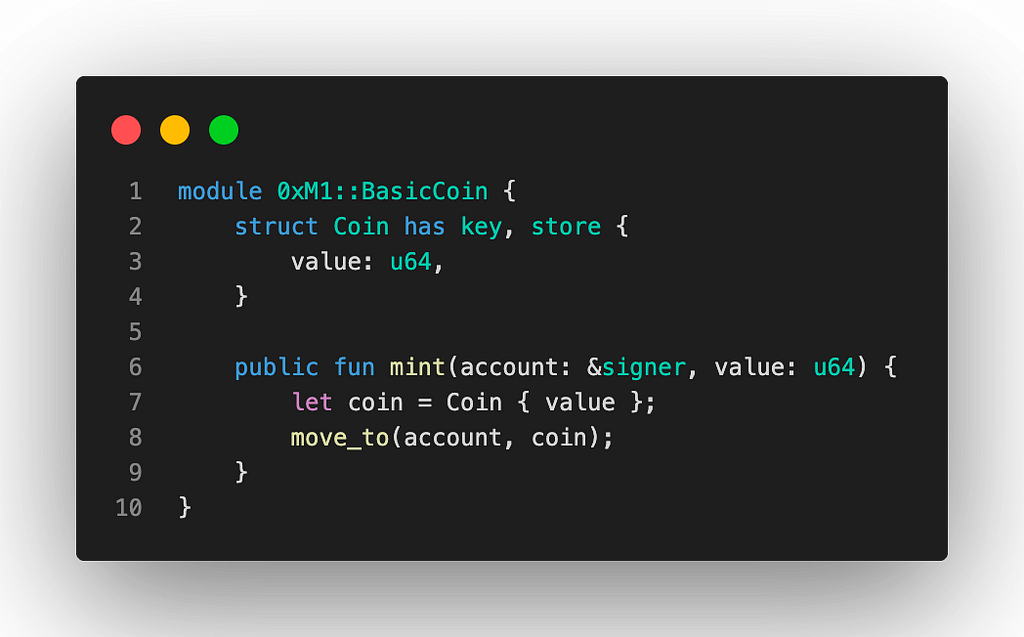
In this module, the Coin struct, endowed with both key and store abilities, demonstrates Move’s capability for creating, managing, and securely storing digital assets. Through the mint function, new Coin instances are generated with a specified value and securely assigned to a user’s account using the move_to operator. This operation ensures each Coin is unique, non-copyable, and permanently associated with an individual account, safeguarding against the risks of asset duplication or loss. The BasicCoin example not only showcases Move’s powerful asset management features but also highlights the language’s emphasis on security and the prevention of common programming pitfalls, ensuring a secure and reliable environment for digital transactions.
Drop Ability Example:
The provided code snippet demonstrates the use of the drop ability in the context of the Move programming language, specifically within the Aptos blockchain’s Move module. The drop ability allows a struct to be dropped or discarded, meaning its memory can be reclaimed. This is particularly useful for managing resources efficiently within smart contracts.
Example:

Within this context, the Country module defines a struct also named Country that possesses the drop ability. This struct incorporates two fields: id of type u8 and population of type u64, underscoring Move’s capacity to manage complex data structures efficiently. The has drop syntax signifies that instances of the Country struct are eligible for disposal, thereby avoiding compile-time errors associated with unmanaged memory.
The script utilizes the Country module to instantiate a new Country struct through the new_country function, inferred to be part of the module’s interface. By creating a new instance with an id of 1 and a population of 1,000,000, it exemplifies the structured and safe disposal of resources in Move. This instance’s eligibility for dropping — enabled by the drop ability — exemplifies a sophisticated approach to resource management, crucial for avoiding leaks and ensuring safety in smart contract execution.
In summary, this example not only showcases the definition and utilization of a struct with the drop ability in Move but also highlights the language’s advanced resource management capabilities.
Copy Ability Example:
To provide a simple example demonstrating the use of the copy ability in a Move module, let’s create a module that includes a struct with the copy ability and a function that copies an instance of this struct. This example will be based on the information provided in the sources and will show how to define a struct with the copy ability and use it within a function.
Example:
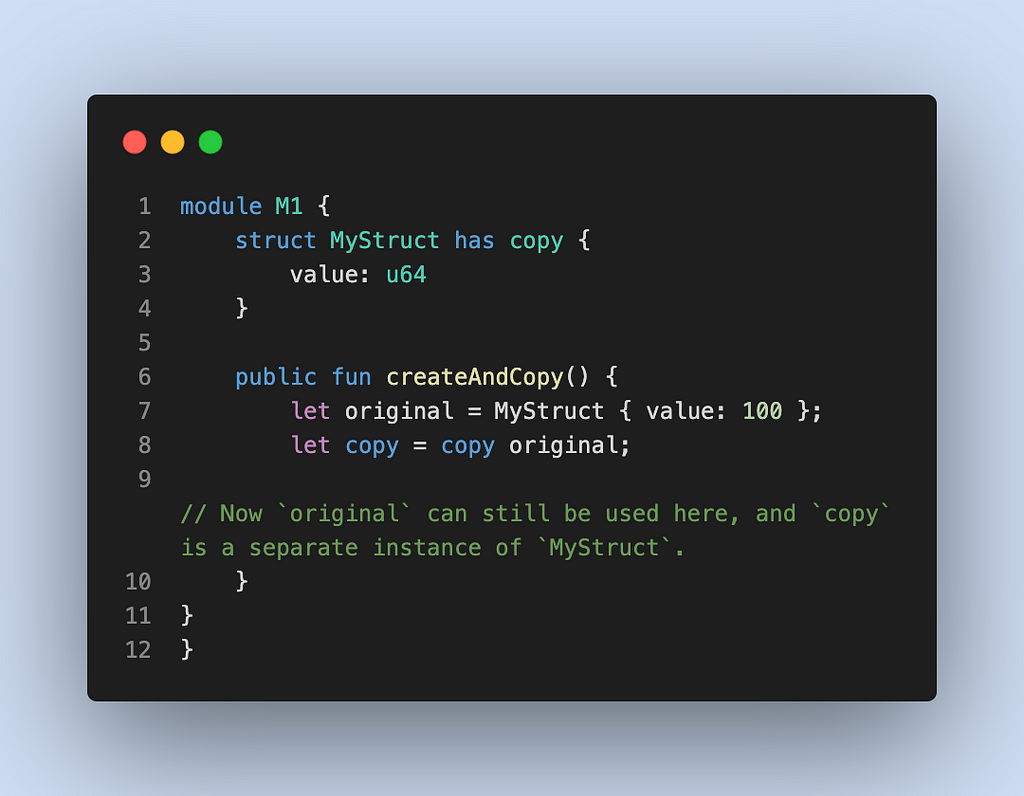
Inside M1, a struct named MyStruct is defined with a single field value of type u64. The struct is given the copy ability by specifying has copy in its definition. This means instances of MyStruct can be copied. A public function createAndCopy is defined. This function creates an instance of MyStruct with the value set to 100 and assigns it to the original. Then, it creates a copy of the original using the copy keyword and assigns it to copy. This demonstrates the use of the copy ability, allowing a new instance of MyStruct to be created from the original without affecting the original instance. This example illustrates how the copy ability in Move allows struct instances to be copied, enabling the original instance to be reused after the copy is made. This is particularly useful in scenarios where you need to work with copies of struct instances without affecting the original data.
Securing the Future of Blockchain with Move’s Unique Resource Management
The narrative of digital asset management is one undergoing rapid evolution, and at the heart of this transformation is the Move programming language. Following the illustrative BasicCoin example, it becomes evident that Move’s resource model is not merely a theoretical construct but a practical solution to real-world challenges in blockchain technology. The BasicCoin module serves as a testament to Move’s innovative capabilities, illustrating how digital assets can be managed with unprecedented levels of security and efficiency. This approach marks a significant departure from conventional methods, where the intricacies of asset management often lead to vulnerabilities and inefficiencies. By embedding security into the very fabric of digital asset creation and management, Move sets a new benchmark for what’s possible in the blockchain space.
This transition to a more secure and efficient model of digital asset management, as showcased by Move, does more than just address existing challenges; it opens the door to new possibilities. The precision and robustness of Move’s resource model empower developers to innovate without the constant overhead of security concerns that plague traditional blockchain development. This shift not only enhances the reliability of digital transactions but also fosters a more inclusive and expansive blockchain ecosystem. As we pivot from the BasicCoin example to the broader applications of Move in bridging blockchain ecosystems, it’s clear that the implications of this advancement extend far beyond the confines of any single blockchain platform.
Bridging the Gap with Movement Labs
Movement Labs emerges as a pioneering venture that seamlessly integrates the vast ecosystem of Ethereum with the meticulous resource management capabilities of Move. This integration is facilitated through the development of a sophisticated software development kit (SDK), which amalgamates the standout features of both blockchain paradigms. The Movement SDK serves as a bridge, equipping developers with an arsenal of tools to forge blockchain applications that are not only fortified with unparalleled security measures but also optimized for peak efficiency.
This collaboration marks a monumental leap in the domain of blockchain asset management, erecting a unified framework that marries Ethereum’s expansive and dynamic ecosystem with the cutting-edge asset management methodologies pioneered by Move. The synergy between Ethereum’s scalability and Move’s security-oriented design principles heralds a new era of blockchain development, characterized by enhanced interoperability, security, and user accessibility.
By converging the best of both ecosystems, Movement Labs ushers in a diversified, secure, and user-centric platform ideal for the development and management of digital assets across varied blockchain infrastructures. This innovative amalgamation promises to expand the horizons of blockchain technology, offering a robust, versatile environment that caters to the evolving needs of developers and users alike, setting a new benchmark for the future of decentralized asset management.
Conclusion: Redefining Blockchain Asset Management with Move
The Move programming language stands at the vanguard of a transformative era in blockchain technology, introducing a paradigm shift in how digital assets are managed, secured, and conceptualized. At its core, the revolutionary resource model, with its innovative key and store abilities, establishes a new standard for asset integrity, ownership, and security. This model not only addresses but effectively mitigates the longstanding vulnerabilities inherent in traditional digital asset management systems — such as unauthorized duplication, loss, and tampering — by embedding strict ownership and immutability rules directly into the language’s type system.
Move’s approach, characterized by its emphasis on linear ownership and resource immutability, offers a robust foundation for secure and efficient digital asset management. It ensures that each digital asset is uniquely owned and traceable, protected against unauthorized changes, and securely stored within the blockchain’s global state. This unified security framework marks a significant advancement in blockchain technology, providing a compelling alternative to traditional smart contract platforms.
Moreover, the collaboration with Movement Labs signifies a leap forward in bridging the capabilities of Ethereum with the precision of Move’s asset management. By leveraging the strengths of both ecosystems, Movement Labs is setting the stage for a more versatile, secure, and user-friendly environment for managing digital assets across different blockchain platforms.
In conclusion, Move’s resource model and its pioneering abilities represent a cornerstone in the evolution of blockchain asset management. This innovative approach not only enhances the security and efficiency of blockchain transactions but also fosters a more trustworthy and reliable digital asset ecosystem. As we continue to navigate the complexities of the digital landscape, Move’s contributions lay a solid foundation for the future of blockchain technology, promising a more secure, transparent, and efficient world of digital asset management.
Transforming Digital Asset Management: The Move Revolution was originally published in Movement on Medium, where people are continuing the conversation by highlighting and responding to this story.

